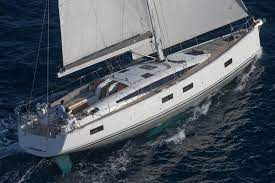Who are we
The onboard training is organized by sail2learn. The instructors have all sailed since childhood in all kinds of sailboats. They have all completed exams as Y1 and also taught and led more than 100 students to the exam in Y1. They are all experienced skippers on their own boats with completede examsin engine fit and radio communication.
The ship we sail in is a Jeanneau 55 from 2007, 15 m. long, almost 5 m. wide, equipped with genoa, cross lining on the inner roof and mainsail with 3 ropes. Engine of 75 hp, all modern navigation equipment, 12 berths,bows, electric games and electric anchorage. The ship is stuck in Antibes.
Picture of the ship:
